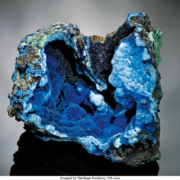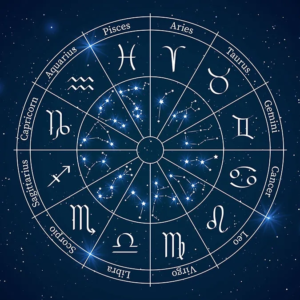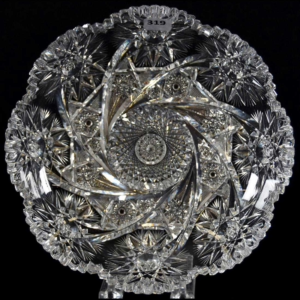Azurite stone – properties, virtues & benefits
azurite stone is a beautiful stone that helps to improve blood circulation and vision, and supports those who desire knowledge.
AZURITE CHARACTERISTICS
- Chakra: Third Eye.
- Properties: Psychic abilities, Calm and patience, Self-confidence, Manifestation, Inner vision, Communication with guides.
- Astrology: JuPiter, Uranus.
- Zodiac: Sagittarius.
- Elements: Wind.
- Colors: Blue, Light Blue.
- Hardness: 4.
- Chemical Formula: Cu3(CO3)2(OH)2
AZURITE – ITS HISTORY
The name azurite is derived from the Persian “lazhward”, which translates as blue. This mineral has been used in design and for its Pigments, and is also mentioned in ancient Egyptian culture. The Wadi Maghara mine is one of the oldest, having been in use for almost 5,000 years. Theophrastus, a philosopher and botanist who lived from 371 to 288 BC, called it “Armenian stone” or “LaPis Armenis” in his work entitled “Treatise on Stones”, although it was also called “Armenium” or sometimes “Caeruleum cyprium”. The Greeks and Romans imported stone from Armenia or Cyprus. In the Middle Ages, azurite stone was commonly used to color manuscripts. It was initially imported from Hungary and Germany under the name “Chessylite”, after its discovery in Chessy-les-Mines, France. However, by the 19th century, this deposit had been fully exploited and the mine had to be closed.
Azurite stone has been linked to many ancient cultures and civilizations. In ancient Egypt, the seer would draw a third eye in order to gain more power. Among the Mayans, it had a role as a connector with higher intelligence. In Atlantis, it was considered a powerful stone that could help calm various disorders. But this legend disappeared over time, taking all its mysteries with it. The name “azurite” was given by geologist-mineralogist François SulPice Beudant in 1824, when he included it in his “Traité élémentaire de minéralogie” The International Mineralogical Association recognizes the name azurite.
AZURITE STONE – ITS ORIGIN AND COMPOSITION
Azurite is a mineral composed of copper carbonate and has the chemical formula Cu3 (CO3) 2 (OH) 2. It usually occurs as spectral or prismatic crystals that can be azure blue, Prussian blue, or have a vitreous appearance. Clear crystals generally turn a dull blue under polarized light microscopy; this pleochroism is predominantly blue. It has a perfect pattern and is rated between 3.5 and 4 on the Mohs scale with a specific gravity of 3.77, meaning it is a soft mineral. It also melts in acidic liquids and ammonia, but above all, it draws an azure line. This mineral boils when mixed with hydrochloric acid, which differentiates it from lazurite. However, they share a similar name and color. The latter is also soluble in acid, but does not cloud, instead forming a bluish substance.

AZURITE STONE – VERTIES AND PROPERTIES
Azurite stone helps purify the emotions and bring clarity to thoughts. It can help free oneself from bad habits and negative thought patterns, making it easier to solve problems. More generally, azurite can help clear any physical or mental blockages that may prevent you from reaching your full potential. This includes promoting intelligence, wisdom and discernment, as well as helPing to replenish your energy levels. Natural azurite stone is said to help expand our capacity to conceive the sPirit of understanding, as well as reach the source of our ideologies. On a sPiritual level, it enables us to ascribe all the principles that would help us to have what we need and achieve what needs to be done. In lithotherapy (the study of stones), the azurite stone suggests thinking before deciding or acting. Azurite stones are known to encourage innovation and imagination, which is why they are often recommended for researchers and academics. Azurite stone acts on the eyes and nervous system, promoting concentration and focus. From a physiological point of view, azurite stone offers benefits such as: faster recovery from surgery, stronger joints, improved blood circulation and positive effects on the entire nervous system.
WHERE DOES THE NAME AZURITE COME FROM?

The name Azurite comes from its intense blue color, reminiscent of azure. The word “azure” is derived from the Persian “lajward”, meaning “blue”. Azurite is a mineral composed of copper carbonate, and its blue color is due to the presence of copper in its composition. It is often associated with malachite, also a green stone composed of copper carbonate. Azurite and malachite often form together in copper deposits, and are often used together in lithotherapy for their complementary properties. Azurite has been used since antiquity to make blue Pigments used in paint and cosmetics, and is also valued as an ornamental stone and in jewelry.
WHICH CHAKRA DOES AZURITE ACT ON?

Azurite is associated primarily with the third eye chakra, also known as the Ajna chakra in Sanskrit. This chakra is located on the forehead, between the eyebrows, and is associated with intuition, perception, mental clarity and higher consciousness. Azurite is considered a stone that stimulates third-eye activity, promoting the development of sPiritual awareness and intuition. It is also used in meditation to facilitate access to altered states of consciousness and to stimulate psychic and extrasensory abilities. In addition, Azurite can also act on other chakras, particularly the throat chakra, which is associated with communication, self-expression and creativity.
AZURITE AND FENG SHUI

In Feng Shui, Azurite is considered a stone that brings powerful, stimulating Yang energy. It is associated with the Metal element, which is linked to mental clarity, communication and inner strength. Azurite is often used to purify and activate space energies, particularly in work or study areas, as it stimulates concentration, creativity and productivity.
To reap the benefits of Azurite in Feng Shui, Azurite objects can be placed in work or study areas, such as balls, spheres or pyramids. It’s also possible to place an Azurite stone in the North sector of the house or room, which is associated with career, professional success and knowledge.
WHICH ASTROLOGICAL SIGN IS ASSOCIATED WITH AZURITE?
There is no astrological sign specifically associated with Azurite. However, some sources indicate that Azurite may have a particular affinity with the astrological signs of Taurus, Virgo and Aquarius.
Taurus is associated with stability, security and grounding, and Azurite can help reinforce these qualities by promoting self-confidence and balancing emotions.
Virgo is associated with reason, analysis and mental clarity, and Azurite can help boost these abilities by promoting concentration and lucidity.
Aquarius is associated with innovation, creativity and communication, and Azurite can help foster these qualities by stimulating self-expression and creativity.
WHICH PLANET IS ASSOCIATED WITH THE AZURITE STONE?
In astrology, Azurite is associated with the planet Venus. Venus is the planet of love, beauty, creativity and harmony. It is also associated with feminine energy and seduction. Azurite, with its beautiful blue color and sPiritual properties, is considered a stone that stimulates creativity, promotes self-expression and helps harmonize energies. It is often used to help balance emotions and foster self-love.
Azurite is also associated with the planet Saturn due to its metallic nature. Saturn is the planet of structure, discipline and order. Azurite can help strengthen mental discipline and improve concentration, which is useful for overcoming obstacles and achieving one’s goals.
WHICH GOD IS ASSOCIATED WITH THE AZURITE STONE?
There is no specific god associated with the Azurite stone in known mythologies or religions. However, in some ancient cultures, Azurite was considered a sacred stone and used to create ritual and religious objects.
For example, in ancient Egyptian culture, Azurite was used to create jewelry, figurines and statues representing deities such as Horus, the falcon god of war and hunting, and Hathor, the goddess of love, beauty and motherhood.
Similarly, in Sumerian culture, Azurite was considered a precious stone and was used to create jewelry and religious objects, notably to represent the goddess of love and fertility, Inanna.
HOW DO YOU KNOW IF IT’S A REAL AZURITE?
There are several methods for determining whether a stone is a true Azurite:
- Check the color: Azurite is usually dark blue in color, with occasional shades of green. If the stone you’re examining is a different color, or if the color looks artificial, it’s probably fake.
- Check texture: Azurite has a soft, silky texture, while synthetic or artificial stones can have a grainy or rough texture.
- Check hardness: Azurite has a hardness of 3.5 to 4 on the Mohs scale, which means it’s relatively soft and easily scratched. If the stone is very hard or very resistant to scratching, it’s probably fake.
- Check for inclusions: Azurite may have inclusions of malachite or other minerals, which can add texture and depth to the stone. If the stone you’re examining appears perfectly homogeneous or without any inclusions, it could be fake.
- Use an expert: If you’re not sure of the stone’s authenticity, it’s advisable to call in a gemological expert or trusted jeweler to examine and appraise it.
IS AZURITE A PRECIOUS STONE?
Azurite is a semi-precious stone, meaning that it is not as rare and valuable as diamonds, rubies or emeralds, but it is still considered a precious stone due to its physical properties, beauty and value on the gemstone market.
WHEN TO WEAR AZURITE STONE?
Azurite stone is often used for therapeutic, sPiritual and energetic purposes. Here are some situations in which wearing or using Azurite stone can be beneficial:
- To stimulate the throat chakra: Azurite stone is associated with the throat chakra, which is linked to communication, self-expression and intuition. Wearing Azurite jewelry around the neck or placing the stone over the throat chakra can help release energy blockages and promote better communication.
- To stimulate intuition and creativity: Azurite is also associated with the third eye, which is linked to intuition, creativity and sPiritual perception. Wearing Azurite jewelry on the forehead or placing the stone over the third eye can help stimulate these abilities.
- To promote emotional healing: Azurite is considered an emotional healing stone and can help release blocked or repressed emotions. Wearing Azurite jewelry near the heart or placing the stone on the heart chakra can help open the heart and promote emotional healing.
- To encourage meditation: Azurite is a powerful meditation stone that can help calm the mind and promote concentration. Holding an Azurite stone during meditation or placing the stone in front of you can help facilitate meditation practice.
TRADITION OF AZURITE STONE IN ANCIENT TIMES
Azurite has been used by many cultures throughout history for its sPiritual and medicinal properties. Here are just a few examples of Azurite stone traditions from ancient times:
- Ancient Egypt: the Egyptians used Azurite to make jewelry and cosmetics, as well as for its medicinal properties. They believed the stone had curative properties for eyes and infections.
- Pre-Columbian civilizations: the Aztecs and Mayans used Azurite in the manufacture of jewelry, statues and ritual masks. They believed the stone had magical powers and was associated with the gods of rain and fertility.
- Ancient China: The Chinese used Azurite to make jewelry and sculptures, as well as for its medicinal properties. They believed the stone had healing properties for the liver and nervous system.
- Ancient Greece: the Greeks used Azurite to make jewelry and sculptures, as well as for its medicinal properties. They believed the stone had curative properties for eye diseases and headaches.
AZURITE STONE LEGEND AND FOLKLOR
Azurite is a stone that has insPired many legends and stories throughout history. Here are just a few examples of legends and folklore associated with the Azurite stone:
- The ancient Egyptians believed Azurite to be the sacred stone of the god of wisdom and knowledge, Thoth. According to legend, Thot used Azurite to write down the laws of the universe.
- In Chinese tradition, Azurite was considered the stone of enlightenment and wisdom. Chinese Buddhist monks used Azurite to meditate and achieve a state of calm and tranquility.
- The Aztecs and Mayans believed Azurite to be the sacred stone of the rain and fertility gods. They used the stone in religious ceremonies and rituals to invoke the powers of these gods.
- In ancient Greece, Azurite was considered the stone of the goddess of love and beauty, Aphrodite. According to legend, Aphrodite used Azurite to create the Mediterranean Sea.
- In Native American tradition, Azurite was considered the stone of communication and mental clarity. Shamans used Azurite to connect with sPirits and deities.
HOW TO MEDITATE WITH AZURITE STONE
Meditation with Azurite stone can be an effective practice for connecting to your throat chakra, promoting communication, self-expression, creativity and mental clarity. Here are the steps for meditating with Azurite stone:
- Choose a quiet, comfortable place where you can meditate undisturbed.
- Sit in a meditation position, back straight, legs crossed, or on a chair.
- Hold the Azurite stone in your left hand or place it on your throat chakra, located at the base of your neck.
- Close your eyes and begin to breathe slowly and deeply, concentrating on your breathing.
- Visualize a blue light emanating from the Azurite stone and penetrating your throat chakra, bringing clarity, confidence and serenity.
- Visualize yourself expressing your thoughts and feelings with ease and confidence. You can also repeat a mantra that insPires you, such as “I am calm and confident in my communication.”
- Stay in this meditative state for as long as you like, feeling the benefits of the Azurite stone and your meditation practice.
- When you’ve finished your meditation, thank the Azurite stone for its support and healing.
WHERE TO PLACE AZURITE IN THE HOME?
Azurite is a stone associated with the throat chakra, which is linked to communication, self-expression and creativity. To enjoy its benefits in your home, here are some places where you can place the Azurite stone:
- In the bedroom: place the Azurite stone on your bedside table to promote harmonious communication with your partner, encourage self-expression and improve the quality of your sleep.
- In the office: place Azurite stone on your desk or near your computer to promote mental clarity, creativity and effective communication.
- In the living room: place the Azurite stone in a corner of the living room to stimulate conversation and harmonious communication between family members or guests.
- In the bathroom: place Azurite stone on a shelf or dresser in your bathroom to encourage self-expression and honesty, and to help you communicate effectively with your partner.
- In the garden: place Azurite stone in your garden to encourage communication with nature, stimulate creativity and bring peaceful, harmonious energy to the space.
WHERE TO PLACE SAFETY AT WORK?
Azurite is a stone that can be useful for promoting communication, creativity and mental clarity, which can be beneficial in a work environment. Here are a few places you can place Azurite stone to enjoy its benefits at work:
- On your desk: Place the Azurite stone on your desk to promote mental clarity, stimulate creativity and encourage effective communication with your colleagues.
- In the meeting room: place the Azurite stone on the meeting room table to encourage harmonious, constructive communication between team members.
- In the reading corner: If your work involves a lot of reading or writing, place the Azurite stone in your reading corner to stimulate creativity and promote clear, effective communication.
- In the break area: Place the Azurite stone in the break area to encourage informal, relaxed communication with your colleagues.
- In your pocket: Carry the Azurite stone in your pocket to promote mental clarity, stimulate creativity and encourage effective communication throughout the day.
WHICH ORGAN OF THE HUMAN BODY DOES AZURITE STONE ACT ON?
On a physical level, Azurite stone is primarily associated with the throat chakra, which is linked to the thyroid gland and the throat itself. Azurite can therefore help improve the health of these organs. It is also often used to relieve headaches and migraines.
AZURITE STONE SUMMARY
Azurite stone is a blue-colored mineral that is often associated with wisdom, communication and intuition. It is often used in lithotherapy to help open the third eye and stimulate clairvoyance. It is also said to help reduce stress and anxiety, improve concentration and creativity, and foster better communication. Azurite stone is often associated with the third eye chakra and can be used in meditation practices to help improve sPiritual connection and awaken higher consciousness.


